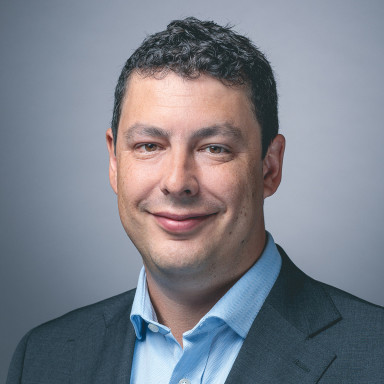Richard Ford is an experienced corporate bond investor and has the support of a strong team at Morgan Stanley
The managers mainly invest in bonds issued by higher-quality companies, believing that this will drive superior long-term returns
More recently, the fund has provided returns broadly in line with the peer group
The fund is on our Wealth Shortlist of funds chosen by our analysts for their long-term performance potential
How it fits in a portfolio
The managers focus on income but aim to generate some growth over the long term too by investing in a wide selection of corporate bonds. The fund is run in a more conservative way than some corporate bond funds, with positioning compared to the benchmark being a meaningful consideration.
We think this fund is a good core option within the sterling corporate bond space which we expect to perform similarly to the peer group average over the short term, with potential for outperformance over longer time periods. It could therefore add some balance to a portfolio focused on shares or higher risk bond funds.
Manager
The fund is managed by Richard Ford and Dipen Patel who are supported by a strong fixed income team at Morgan Stanley from across the globe. Ford became manager of the fund in 2005 and was joined by Patel as co-manager in 2018. The managers also run a number of other fixed income funds at Morgan Stanley, but we think the duo have the experience, support and resources to do a good job for investors.
Process
The managers start by forming their outlook for the wider global economy, considering the prospects for growth, interest rates, inflation and more. They then research individual companies and bonds, trying to make sure companies have the ability to pay the full interest on their bonds and make the capital repayments too.
They think superior long-term returns will be generated by holding better quality bonds. Although they could provide a lower return than higher-risk ones when the economy's doing well, they feel these higher-quality bonds will more than make up for it by falling less when bond markets fall. Ford and Patel also take account of valuations to avoid bonds that could be too expensive, or where the yield is too low to offset the risks they've identified.
The fund invests heavily in the UK, but includes some global bonds too. Where they invest in overseas bonds, the managers remove the effect of currency exchange rate changes by using derivatives, which can add risk.
At a high level, the managers look to invest this fund in a similar way to the benchmark, however with a few important differences. These differences include some exposure to high-yield bonds, which are not part of the benchmark. These are bonds that offer a higher income to investors, but are issued by companies that have a greater risk of not paying their debts. The managers also prefer to have a lower weighting to bonds issued by government related companies and more invested in bonds issued by financial companies.
This means that changes to the amounts invested in high-yield bonds, or large sectors within the universe such as financials, industrials or utilities, can be expected to not change much over the short term. This is true of the 12 months to the end of November, with a small increase to the amount invested in financials and a small decrease in the amount invested in utilities. The exposure to industrials was broadly the same at the end of November 2023 as it was 12 months earlier. In terms of exposure to high-yield bonds, the fund had around 7% of its assets invested in high-yield bonds at the end of November 2023, having reduced this exposure from around 9% over the last 12 months.
The managers have reduced their duration slightly, from around 6 years to around 5.5 years. Duration is measured in years and reflects how sensitive the fund is to interest rate changes. The lower the duration value, the less sensitive the fund is to interest rate changes.
Going forward, Ford thinks that inflation will remain above central bank targets and that interest rates will stay higher than previously. This will likely cause more volatility in bond prices which should mean that there will be more opportunities for active managers in the space to use their skill to invest in bonds that are undervalued.
Culture
Morgan Stanley’s scale and strong history of managing clients’ money means Ford and Patel can rely on an extensive team of experienced bond investors to help them find the best investment opportunities. We view it positively that the managers are incentivised to focus on long-term performance.
The managers are rewarded through a share of the revenues their fund generates. We think their incentivisation structure is better than at some groups, though would prefer a more explicit link to the fund’s performance.
ESG Integration
Morgan Stanley encourages investment teams to adopt Environment, Social and Governance (ESG) approaches that most appropriately integrate with their strategies, but also promotes a set of shared principles to guide their collective ESG effort, such as identifying material ESG issues, engaging with companies to help them improve and prioritising good governance. They believe well-managed companies are more likely to produce long-term, sustainable returns. Fund managers benefit from the support of the Sustainability team, which is responsible for developing Morgan Stanley’s ESG integration standards and producing sustainability data and tools to support investment teams. It also incorporates the Global Stewardship team, which helps with proxy voting and engagement.
Morgan Stanley fund managers and analysts have access to a wide range of third-party tools and research, as well as data the firm has developed itself, such as its ‘ESG Indicator of Change’ data, which provides a snapshot view of whether a company’s ESG data is improving or declining year-on-year.
While this fund is not an ESG or responsible investment focused fund, we think that ESG risks are considered appropriately as part of the company due diligence process that the team undertakes before investing in any bonds.
Cost
The fund has an annual ongoing fund charge of 0.37%, but through Hargreaves Lansdown you can secure an ongoing saving of 0.15%. This means you’ll pay an ongoing charge of 0.22%. We think this is great value for an actively managed fund. The HL platform fee of up to 0.45% a year also applies.
Performance
The fund has done well for investors who've patiently stayed invested over the long term. From the end of 2005 to 30 November 2023, the fund has returned 95.40% compared to the IA £ Corporate Bond sector average return of 80.84%. But past performance is not a guide to the future.
Over the 12 months to the end of November 2023, the fund delivered a return of 4.04%* to investors, outperforming its peer group average by 1.00%. While it’s been a difficult period to invest in bonds due to the ongoing uncertainty around inflation and the direction of interest rates, the investment grade sterling bond market has provided positive returns following some significant losses in 2022.
The largest positive contribution to performance has been the fund’s investments in banking. This is a large part of their investible universe which means that how these bonds perform usually has a big impact on how well the fund does compared to peers. It’s good to see this being an area which has added value for the managers over the last 12 months.
The fund’s duration position for much of this period was broadly in line with the wider market. Duration is measured in years and reflects how sensitive the fund is to interest rate changes. The higher the duration value, the more sensitive the fund is to interest rate changes. Because the fund’s duration positioning has been similar to peers, it hasn’t really added or detracted from returns compared to other corporate bond funds.
Some of the fund’s investments didn’t do as well though, including some government bonds that they held.
At the end of November, the fund had an average yield to maturity of 6.37%, although yields are variable, not guaranteed, and are not a reliable indicator of future income.
Annual percentage growth
Nov 18 - Nov 19 | Nov 19 - Nov 20 | Nov 20 - Nov 21 | Nov 21 - Nov 22 | Nov 22 - Nov 23 | |
|---|---|---|---|---|---|
10.80% | 6.37% | -0.06% | -16.39% | 4.04% | |
IA £ Corporate Bond | 10.17% | 6.30% | 0.20% | -15.65% | 3.04% |

